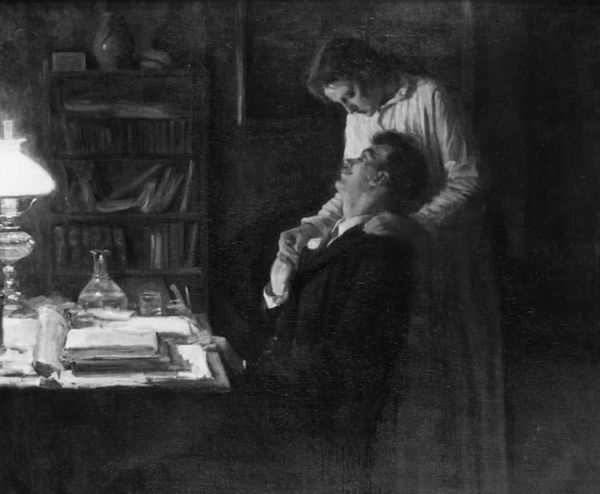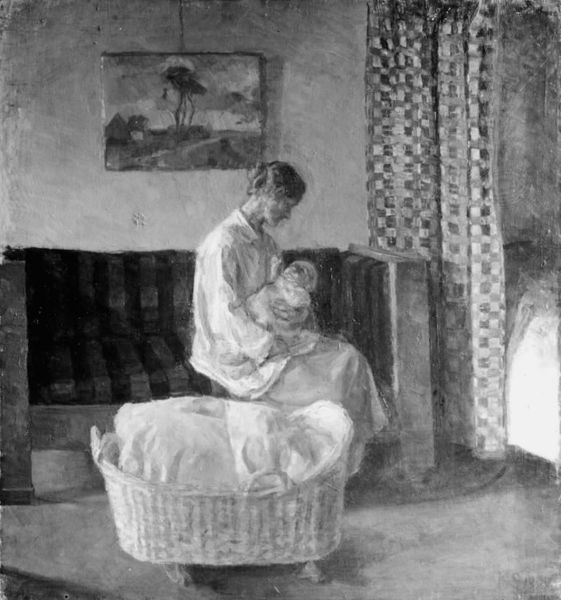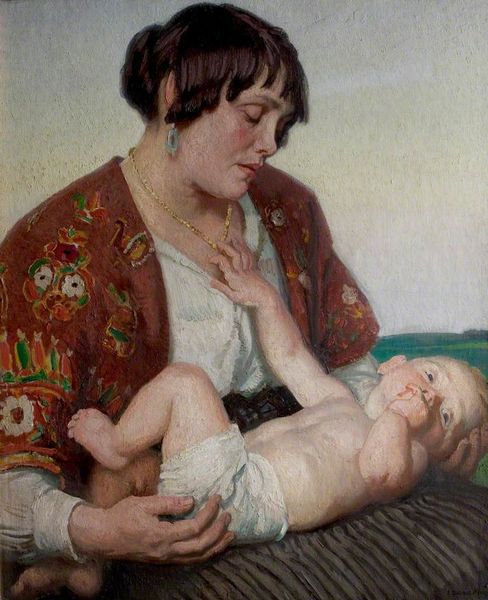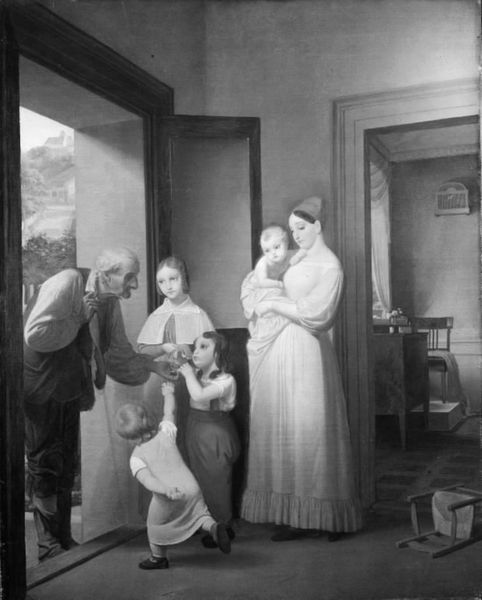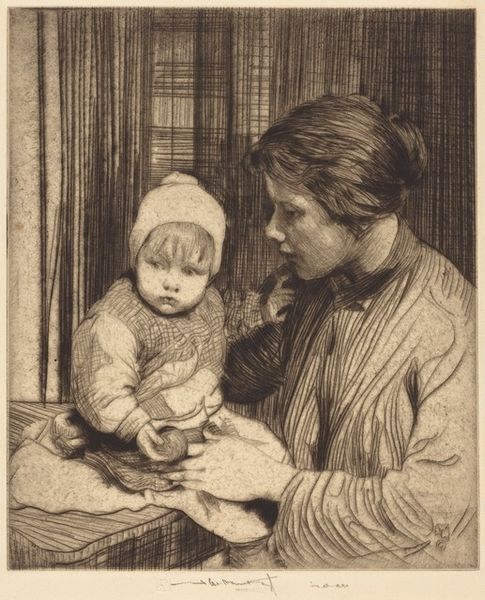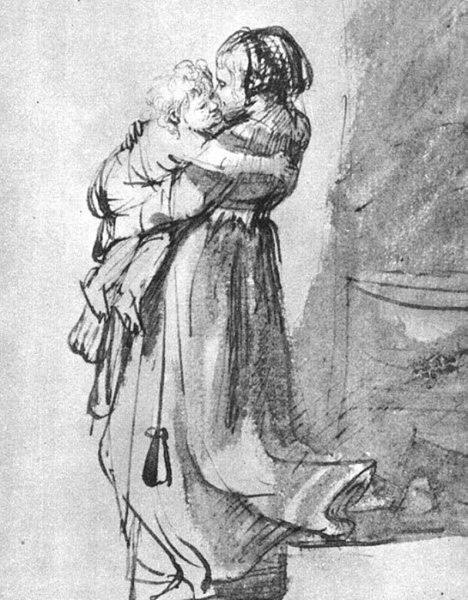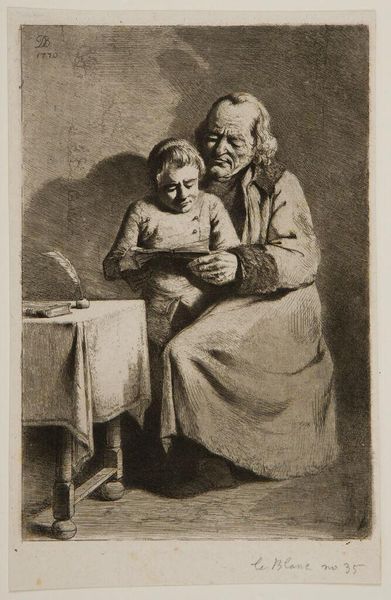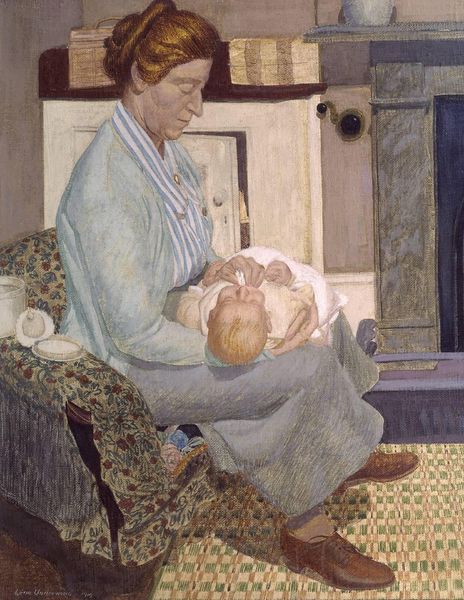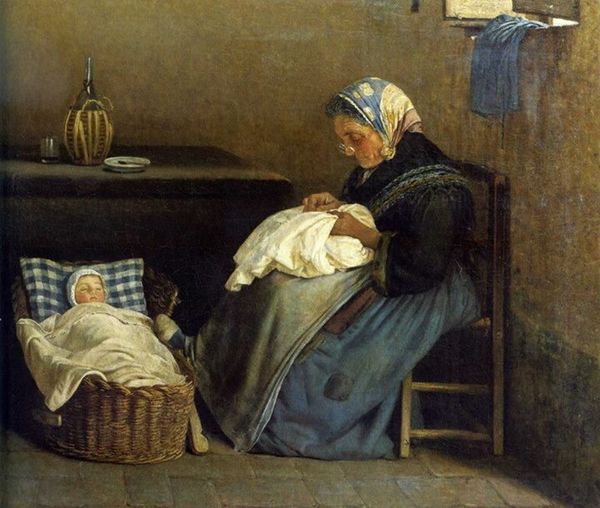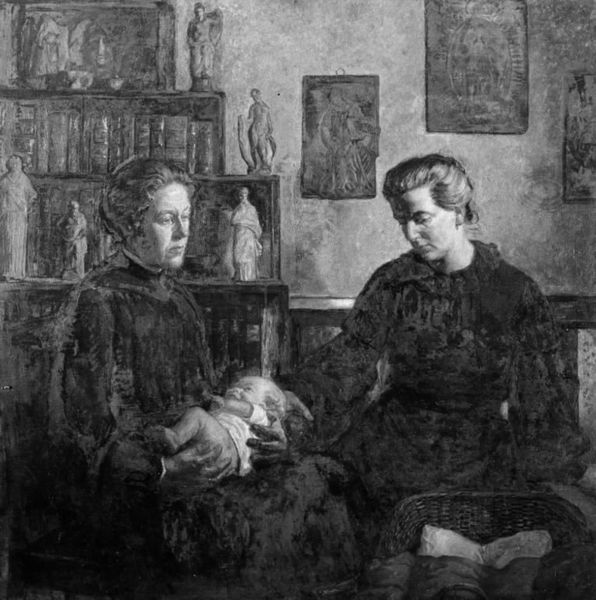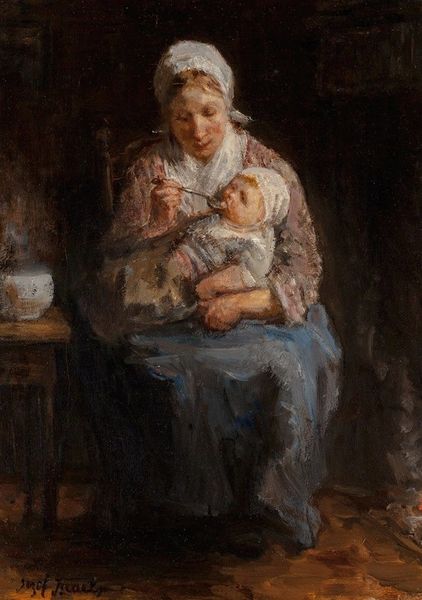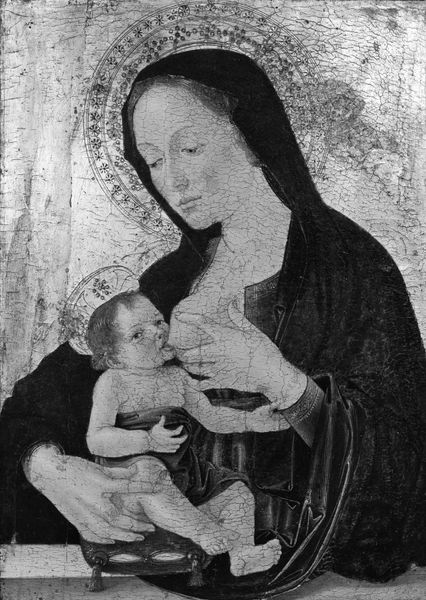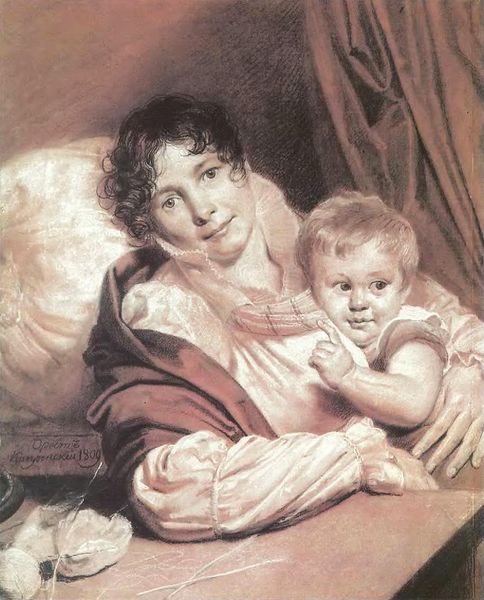
Dimensions: 62.2 cm (height) x 41.5 cm (width) (Netto)
Curator: Standing before us is "The Child," an oil painting created by Carl Wilhelmson in 1903. It's currently held in the collection of the SMK, the National Gallery of Denmark. Editor: The overwhelming impression is one of muted tenderness, though somewhat solemn. The somber palette and the inward gazes evoke a quiet intimacy, like witnessing a private moment of mother and child. Curator: Note the structural composition, particularly the pyramidal arrangement, which gives the painting a sense of stability. This traditional technique reinforces the timelessness of the subject matter: the universal bond between mother and child. Semiotically, the downward gaze suggests reflection, introspection perhaps. Editor: Let's not overlook the materiality of that intimacy, though. Oil paint allows for that luminosity, but also, consider the mother’s clothing—dark and seemingly simple. It hints at the everyday realities and labour often obscured in portrayals of motherhood. Was that dress chosen because it was a worn staple? Curator: An interesting observation. The application of paint indeed draws our eye to materiality. See how Wilhelmson employed short, broken brushstrokes—particularly noticeable in the background and the rendering of the baby's clothes, characteristic of Impressionistic handling, which is applied through the subject with short brisk marks in monochrome shades. Editor: And I'm drawn to consider those lace details on the child's clothing. Hand-made, of course; the labour that is both celebrated and elided. How would access to that kind of handmade fabric impact how people experience that image? How are those hands represented here? There is the hand of the mother around the baby. I see the mother supporting the labor in creating the next generation. Curator: Fascinating how you bring forward notions of materiality. Zooming in, the facial expressions of both mother and child convey a sense of mutual dependency, which has social connotations that cannot be ignored in its symbolic relation. I must confess, the play of light across the surface elevates the artwork. The dark palette serves to make us think more intently about the subject presented here. Editor: In this light, observing and commenting on "The Child" has brought to light not only a scene of familial tenderness, but also brought an intersection between formal construction and societal commentary on labour, material and consumption. It urges us to appreciate its visual qualities. Curator: Yes, by considering both intrinsic visual structure and the artwork’s engagement with materials, the analysis brings forth layers of meaning of Wilhelmson’s poignant rendition.
Comments
No comments
Be the first to comment and join the conversation on the ultimate creative platform.
